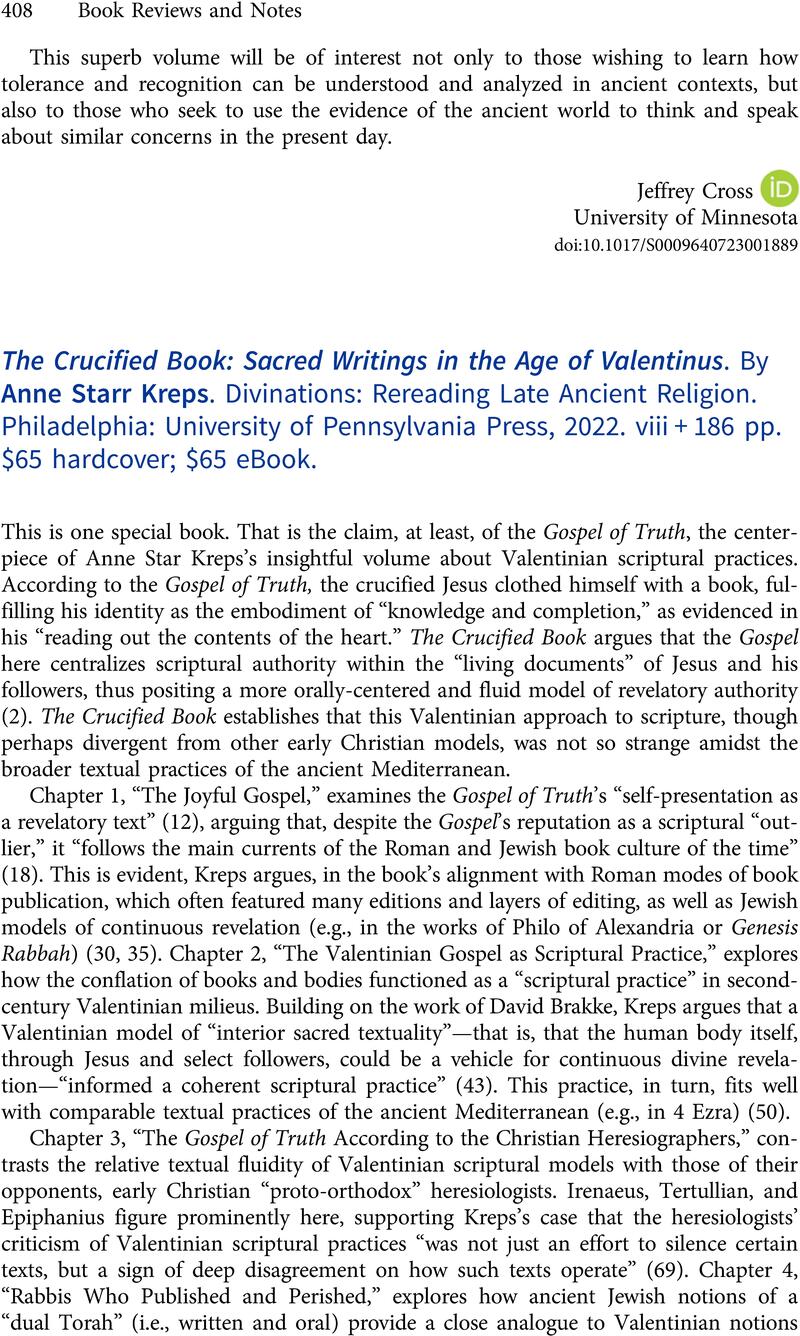No CrossRef data available.
Article contents
The Crucified Book: Sacred Writings in the Age of Valentinus. By Anne Starr Kreps. Divinations: Rereading Late Ancient Religion. Philadelphia: University of Pennsylvania Press, 2022. viii + 186 pp. $65 hardcover; $65 eBook.
Review products
The Crucified Book: Sacred Writings in the Age of Valentinus. By Anne Starr Kreps. Divinations: Rereading Late Ancient Religion. Philadelphia: University of Pennsylvania Press, 2022. viii + 186 pp. $65 hardcover; $65 eBook.
Published online by Cambridge University Press: 02 October 2023
Abstract
An abstract is not available for this content so a preview has been provided. Please use the Get access link above for information on how to access this content.

- Type
- Book Reviews and Notes
- Information
- Copyright
- Copyright © The Author(s), 2023. Published by Cambridge University Press on behalf of American Society of Church History


